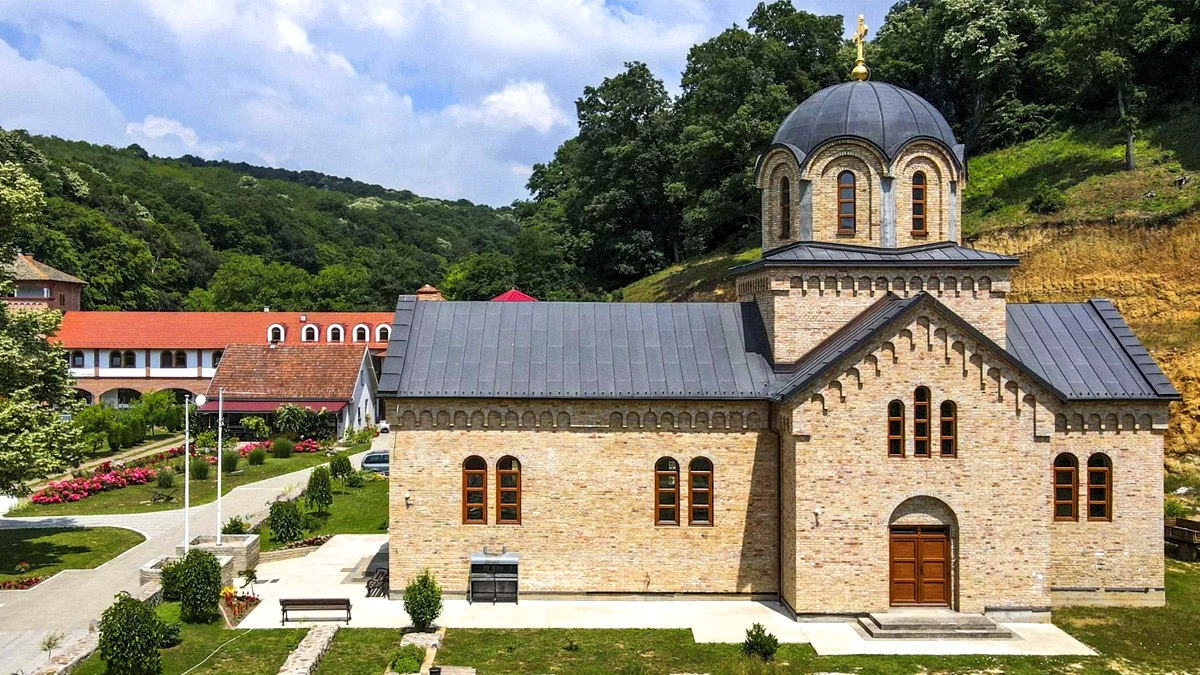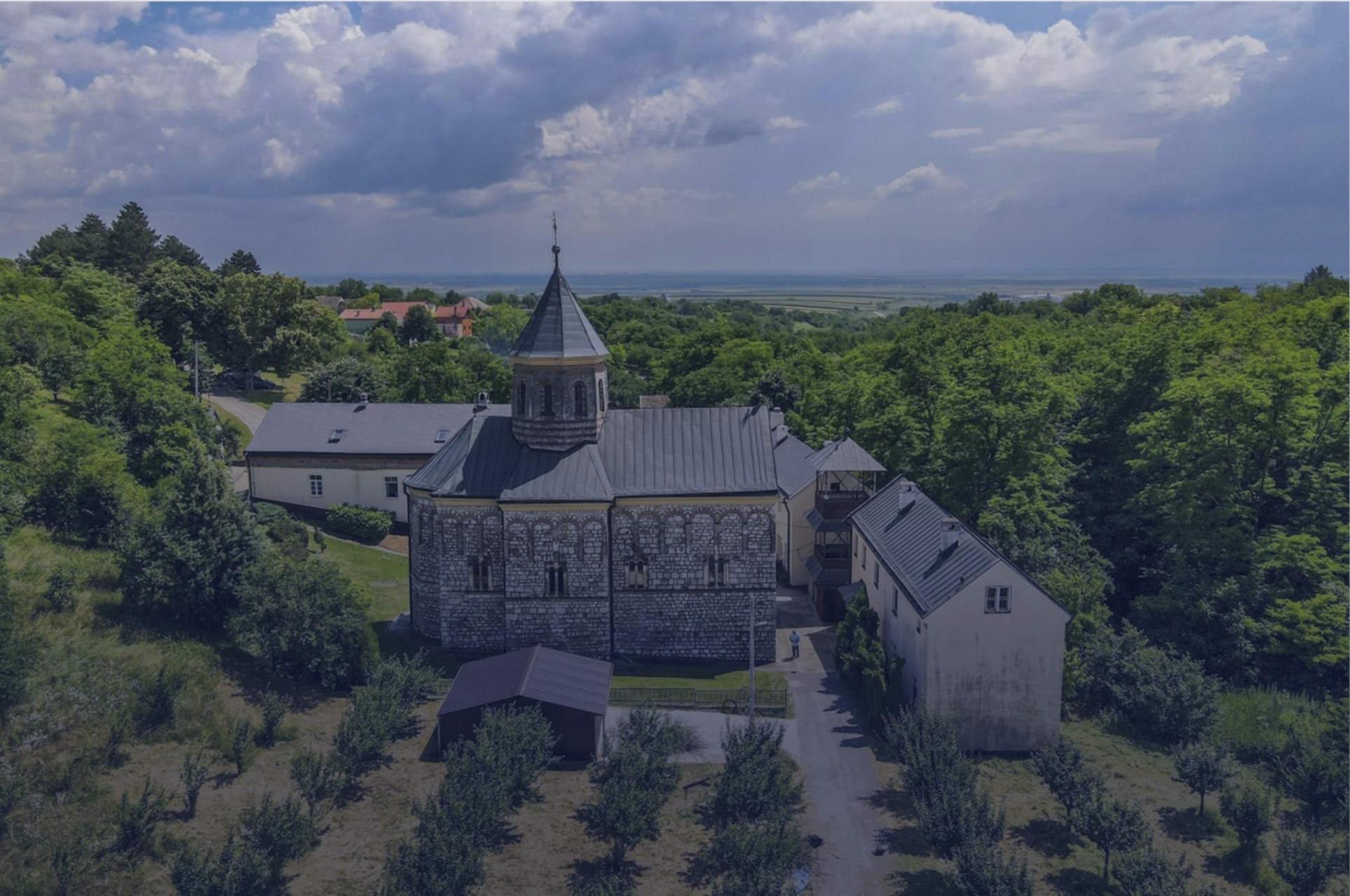
The HOLY MOUNTAIN OF FRUŠKA GORA monastery complex was mostly restored in the 18th century and constitutes a specific cultural and historical entity of Serbian baroque art. The foundations of cultural tradition were laid in the monasteries, and during the difficult times of Turkish occupation, they remained the only centers of culture and education, contributing to the preservation of the national identity and consciousness of the Serbs. In the monasteries, books are written, copied, gilded, and decorated, while architecture and painting are nurtured and maintained. Seventeen Orthodox monasteries, built at the end of the 15th and during the 16th century, are located along the Fruška Gora foothills. Due to the large number of monasteries in one place, Fruška Gora earned the epithet "Serbian Athos."
THE KRUŠEDOL MONASTERY, with a church dedicated to the Annunciation, was founded between 1509 and 1516 by Bishop Maxim (later Despot Đorđe Branković) with the help of Mother Angelina and the Wallachian duke Jovan Njagoja. When the Turks finally withdrew from Srem in 1716, the monastery was damaged, and the church was burned. However, shortly after this event, work began on the restoration of the monastery and church. The baroque bell tower and lodgings were completed in the first half of the 18th century. At the same time, the church was painted, entrusted to Greek masters from the Holy Mountain who operated in the territories of Wallachia and Moldavia. The Krušedol hieromonk Jerotije Dragabović is the author of the first Serbian cookbook in Srem, printed in Zemun in 1855. Laza Kostić and Đura Jakšić stayed at the Krušedol Monastery, the latter of whom, disappointed by unreturned love, came to the monastery in 1856 intending to become a monk.
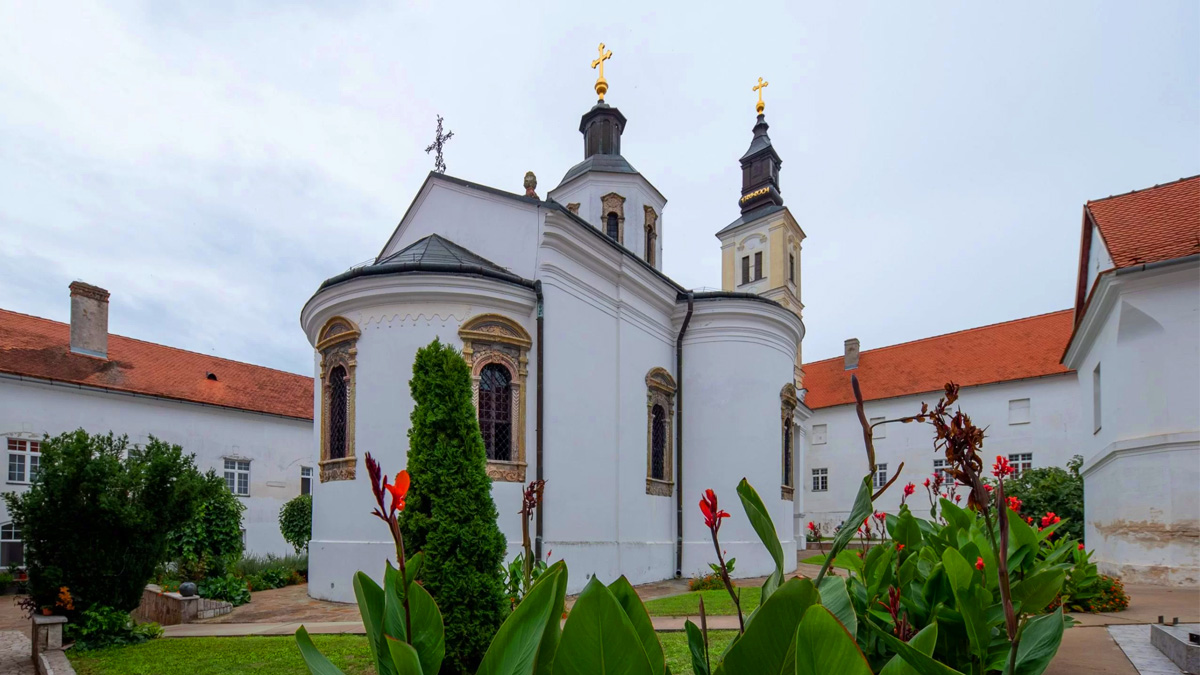
THE NOVO HOPOVO MONASTERY, with the church of St. Nicholas, represents the most significant sacral building of its era in these regions due to its architectural value. The first written mention of the monastery dates back to 1451. The current church was built in 1575-1576, and the bell tower with a small chapel dedicated to St. Stephen was constructed from 1751 to 1758. The buildings of the monastery lodgings were gradually constructed from 1728 to 1771, surrounding the church on all four sides. The fresco painting of Hopovo is one of the most significant in the Balkan artistic area. The icons on the iconostasis were painted by the most prominent Serbian baroque painter Teodor Kračun. The monastery is known for its monumental architecture, fresco decoration, and cultural and educational role. During the 17th century, the fresco decoration of the interior walls was completed. At that time, significant and very frequent connections existed between the Hopovo monastery and Russia, as well as the Holy Mountain. When the Turks retreated, they burned the church in 1688, but it was restored the following year. Protestant preacher Stefan Gerlah recorded between 1753 and 1758 that Serbs in Belgrade, lacking schools, came to Hopovo to learn reading and writing. Since the restoration of the Peć Patriarchate in 1554, Hopovo has been the second residence of the Belgrade-Srem Metropolitan. Therefore, the Srem diocese in the 18th century was also called the Hopovo diocese. As early as the 16th century, the relics of Saint Theodore of Tyron were transferred here. At the beginning of the 18th century, a painting school operated in Hopovo, led by Arsenije Zograf and Nil. From July 1, 1757, to November 1, 1760, Dimitrije Obradović stayed here, where he became a monk and received the name Dositej. The monastery, with a rich library and treasury, particularly suffered during World War II.
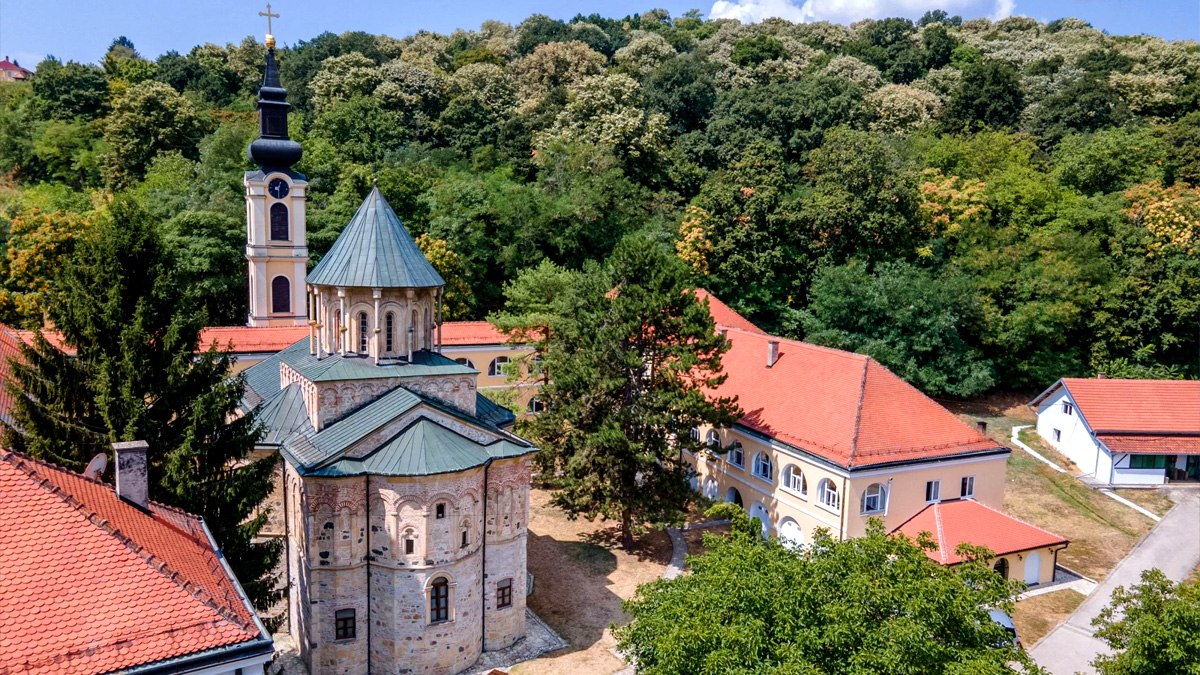
THE VRDNIK-RAVANICA MONASTERY, originally dedicated to St. John the Baptist, today commemorates the Ascension and is mentioned in documents from 1566 to 1569. After the Great Migration, the monks of the Ravanica monastery from Serbia transferred the relics of Prince Lazar to Sentandreja, from where they were brought to Vrdnik in 1687. The church was built from 1801 to 1811 in a classicist style. The icons on the iconostasis and the wall paintings on the ceilings were created by Dimitrije Avramović in 1853. The frescoes in the monastery dining room were painted by Amvrosije Janković from 1771 to 1776.
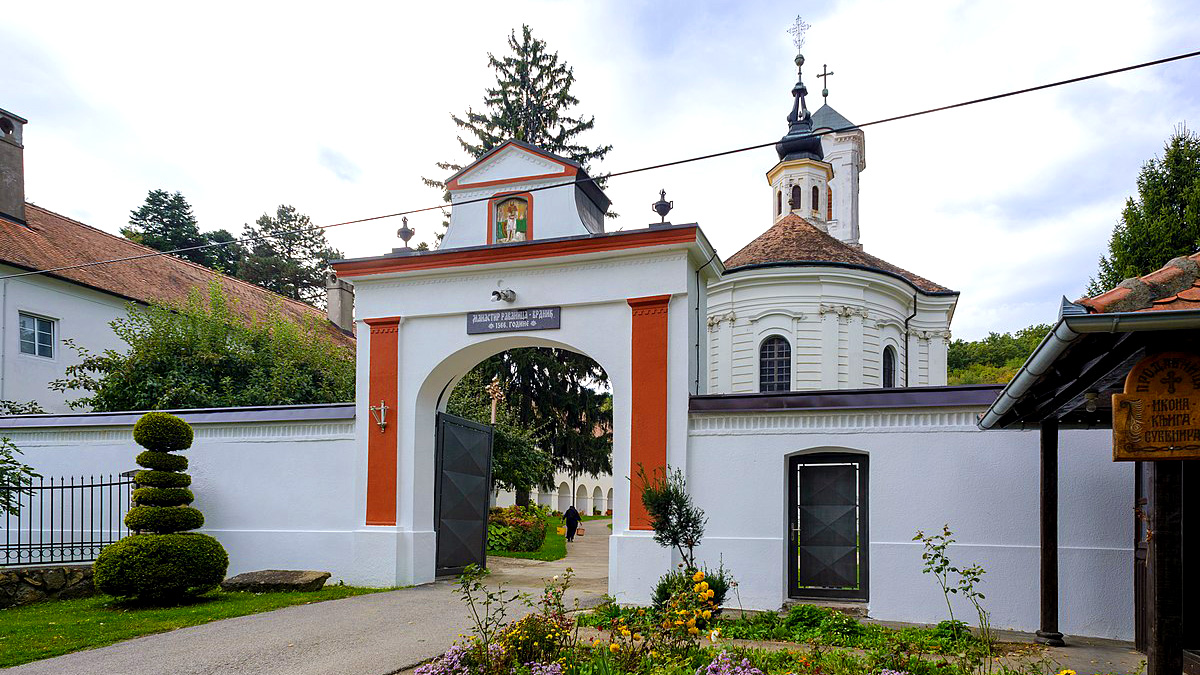
THE JAZAK MONASTERY with the church of the Holy Trinity was founded in 1736. The construction of the church, with traditional architectural forms in its base and construction method, lasted from 1736 to 1758. The baroque bell tower added to the western side was completed in the early 19th century. The monastery lodgings surrounding the church on three sides were built from 1736 to 1761. The icons on the baroque iconostasis were painted in 1769 by Dimitrije Bačević and his associates. A general reconstruction of the monastery was carried out from 1926 to 1930. The relics of Tsar Uroš were transferred back to the monastery at the beginning of the 21st century.
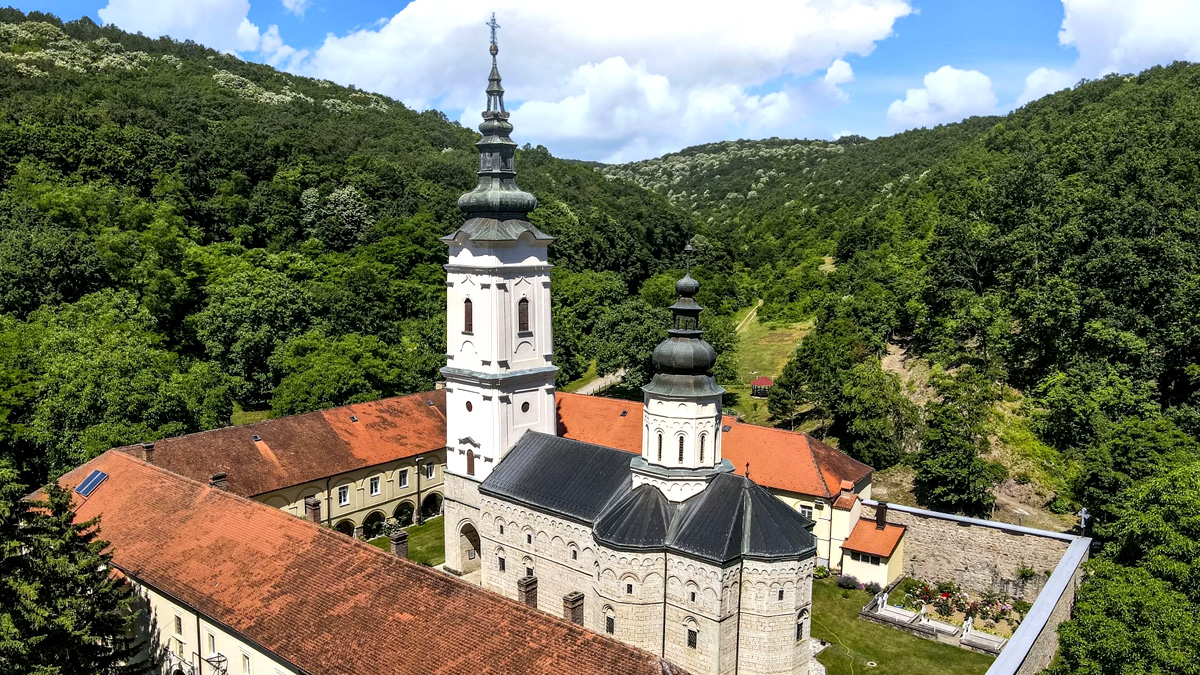
THE MALA REMETA MONASTERY, with the church dedicated to the Protection of the Mother of God, was built, according to tradition, by King Dragutin, who donated it to the Rača Monastery. The first reliable data about the monastery comes from Turkish sources from the 16th century. At the end of the 17th century, the monastery was restored by fleeing monks from the Rača Monastery. It is unknown how the original church looked, on the site of which the current one was built in 1739. The pre-stone icons on the iconostasis were painted in 1759 by Janko Halkozović, and the walls were done by Kosta Venćelović in 1910.
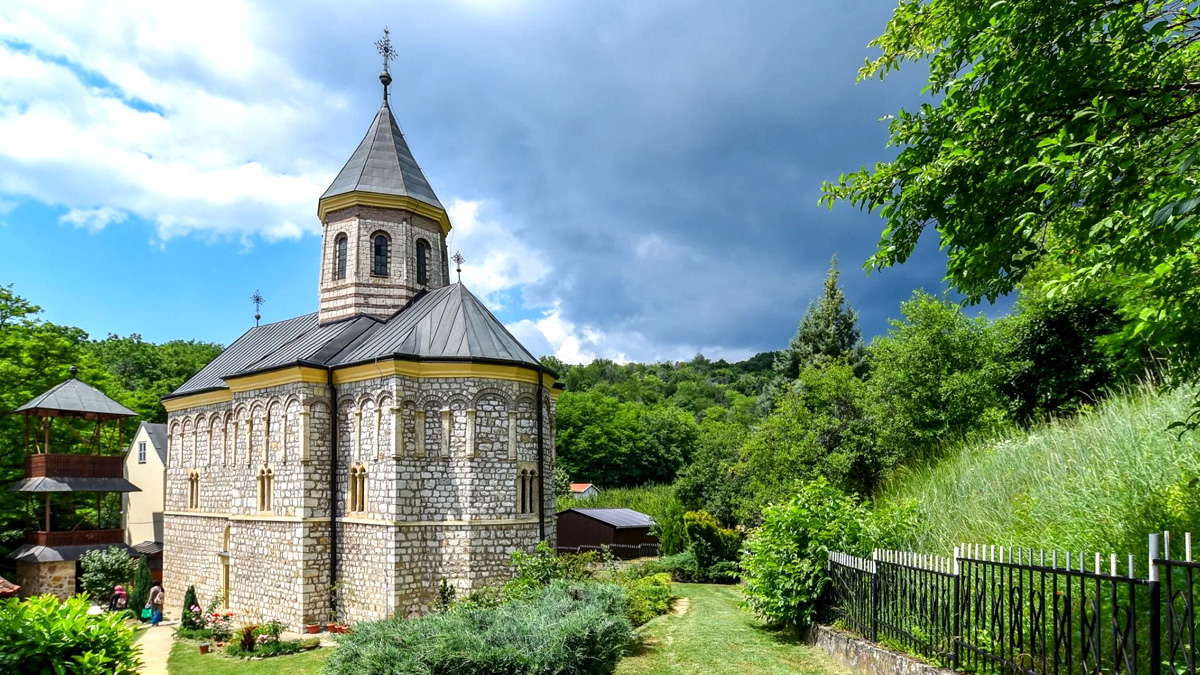
THE VELIKA REMETA MONASTERY, with the church dedicated to St. Dimitrius, is traditionally associated with King Dragutin, but it is more likely that it was established at the end of the 15th or in the early decades of the 16th century. The monastery is first mentioned in 1562. The church was built as a single-nave structure with a dome and a narthex. The baroque bell tower, fully harmonized with the church façade, was added in 1735. The lodgings were built from 1722 to 1771.
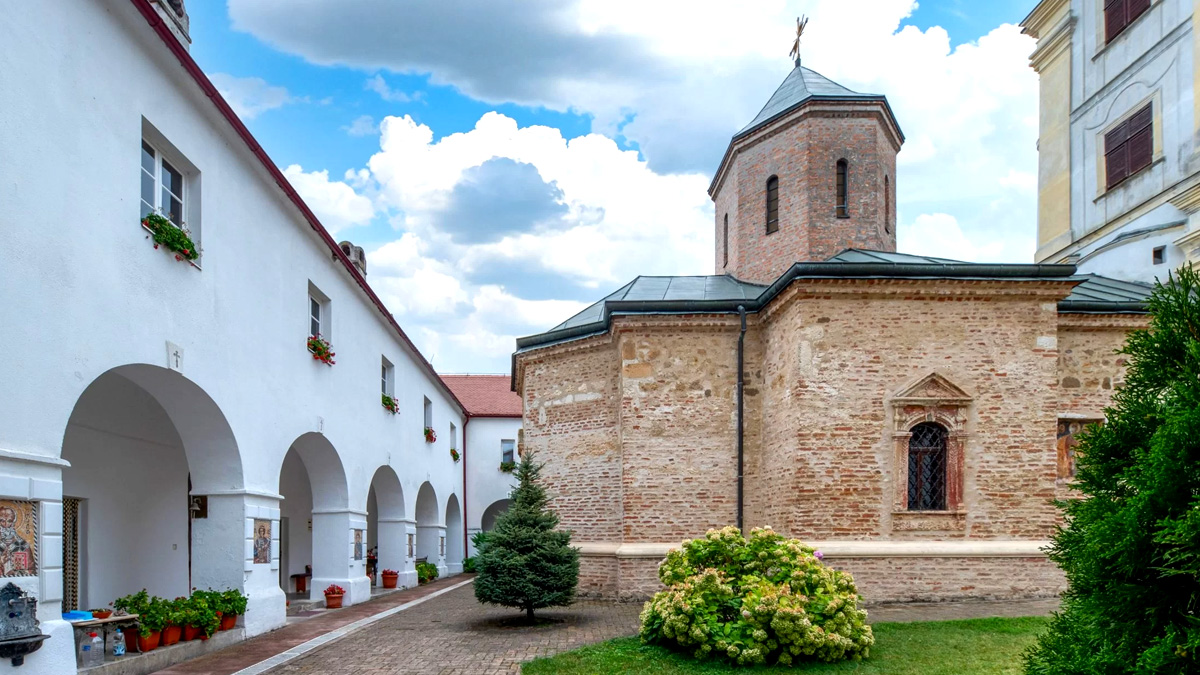
The MONASTERY GRGETEG with the church of St. Nicholas was founded, according to tradition, in 1470 by Zmaj Ognjen Vuk. The first reliable data dates back to 1545-1546. The monastery was abandoned before the Great Migration, and it was restored in 1708 by Metropolitan Isaija Đaković. Around 1770, the current baroque church was built, which was renovated, according to the project of architect Herman Bole, at the end of the 19th and the beginning of the 20th century. At that time, the accommodations surrounding the church on four sides were also restored. The old stone iconostasis, created by Jakov Orfelin from 1772-1774, was destroyed during the monastery's restoration. The icons on the current iconostasis were painted by Uroš Predić in 1901-1902. Next to the monastery, along the creek, a profile of geological layers from the upper tertiary and the entire quarter was discovered. It is protected by the Nature Protection Institute, as it is one of the rare places in the Pannonian Plain where sedimentation occurred continuously. Along the profile is a panel with an explanation.
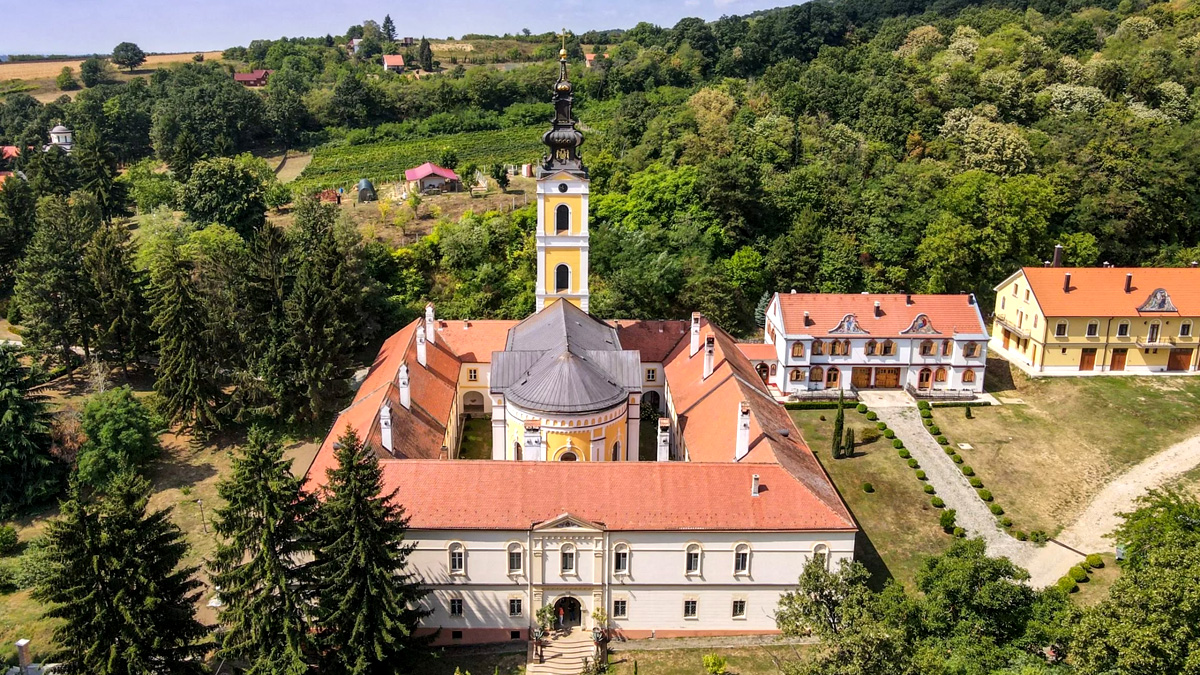
In the southwestern part of Fruška Gora, in a quiet hollow by the Remeta creek, near the village of Šišatovac, lies the female monastery Petkovica with the Church of St. Petka. According to some traditions, this monastery was built by Jelena Štiljanović, the widow of the last Serbian despot Stefan Štiljanović, whose endowment was the Kuveždin monastery. In the past, the monastery was destroyed several times, and during World War II, the iconostasis was damaged, leading to its restoration starting in the 1950s. The church has largely retained its original appearance and is built in slight disproportion, giving a special charm to this building. Everything that can be seen from this place once belonged to the monastery. Its beauty is further enhanced by the rustic stone well, a walled spring of clean drinking water, and a pond in the valley. All of this is interwoven with green lawns, flowers, and trees, creating a harmonious scene. In the immediate vicinity, less than two kilometers away, are the monasteries of Šišatovac and Kuveždin.
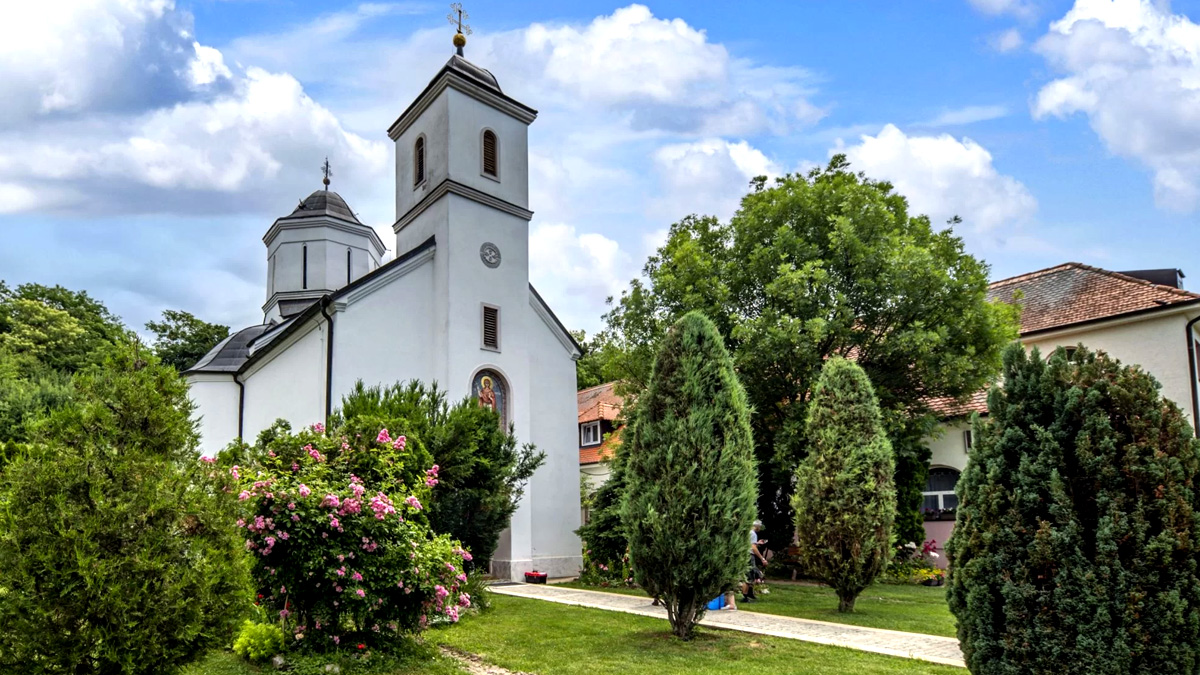
In the western part of Fruška Gora, just five kilometers from Šid, is the female monastery Privina Glava with the church dedicated to the Holy Archangels Michael and Gabriel. This monastery complex consists of nine diverse buildings surrounded by high walls, most of which were built in the last 20 years, and nearby is a creek and a spring named Istočnik, dedicated to the Most Holy Mother of God. Two legends are associated with the founding of this monastery. One legend states that it was built in the 15th century by despot Vuk Branković, and that a certain amount of money was given to the builders for its construction, but since they fled, they were killed on the spot as thieves, and from then on the name Privina Glava, meaning "broken head," originated. With greater certainty, one can talk about the creation of the monastery according to the other legend. This is related to landowner Priva, who built a church in the 12th century, and on the foundations of this place, despot Jovan Branković built a church in the 15th century. The Munich Psalter, one of the most significant and lavish Serbian books from the Middle Ages, was kept in the monastery treasury until the 17th century when it was taken by a Bavarian officer during the Great Turkish War and transported to Bavaria, where it remains to this day. If you are near Privina Glava, you can visit the monastery of St. Petka in Berkasovo, the Lipovača picnic area, or continue your journey to Sotsko Lake.
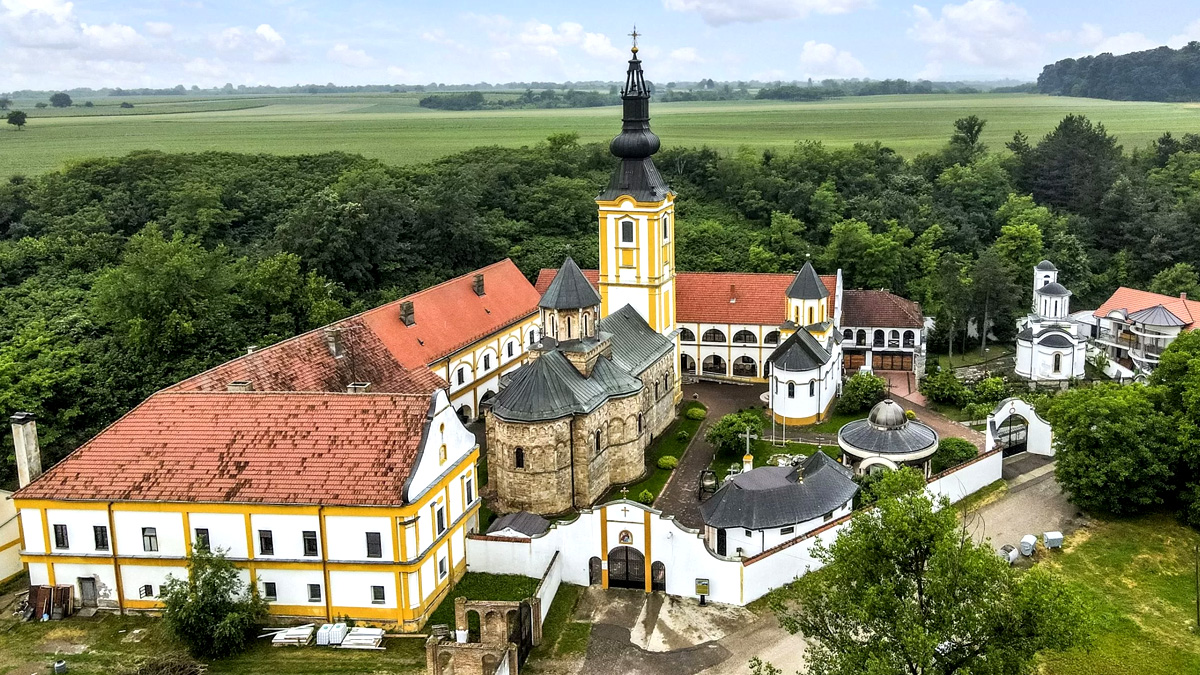
In the southwestern part of Fruška Gora, near the place Divoš, is the male monastery Kuveždin. It is located in a narrow valley surrounded by three small hills covered with rare forest, in the open area towards the village where the monastery estate and garden are located. This particularly monumental monastery had a rich treasury and large landholdings, and the nearby monasteries Divša and Petkovica were under the administration of Kuveždin. According to tradition, the monastery was founded in the 16th century by the last Serbian despot Stefan Štiljanović, and it is dedicated to Saint Sava and his father Stefan Nemanja. The monastery complex consists of a church with a bell tower surrounded on three sides by two-story accommodations, while on the fourth side there is a protective wall. Above the monastery on a small hill are a cemetery and a small chapel. During World War II, these monastery buildings were severely damaged, and after the war, like most other monastic buildings, they remained abandoned for a long time, until in 1990 they were placed under the protection of cultural monuments. The monastery is in the process of restoration, and the largest scar is the unfinished western wing of the accommodations. In the monastery complex, there is a spring where you can refresh yourself.
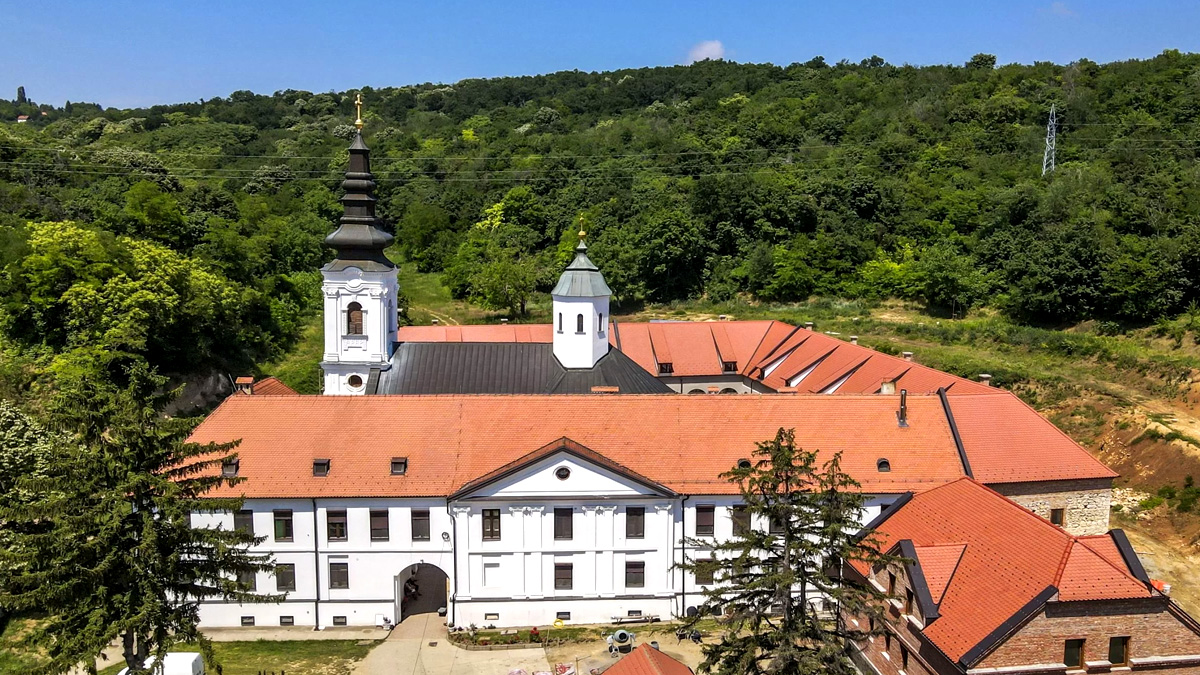
In a beautiful setting in the cove between the villages of Grgurevci and Manđelos, the foundations of the youngest Fruška Gora monastery were laid in 2011, dedicated to Saint Vasilije Ostroški. The beautiful wooden church, built from Norwegian white pine and larch, stands out with its architecture from other Fruška Gora monastery churches, making it special. The church is built above a spring, and the accommodations around the monastery are still under construction.
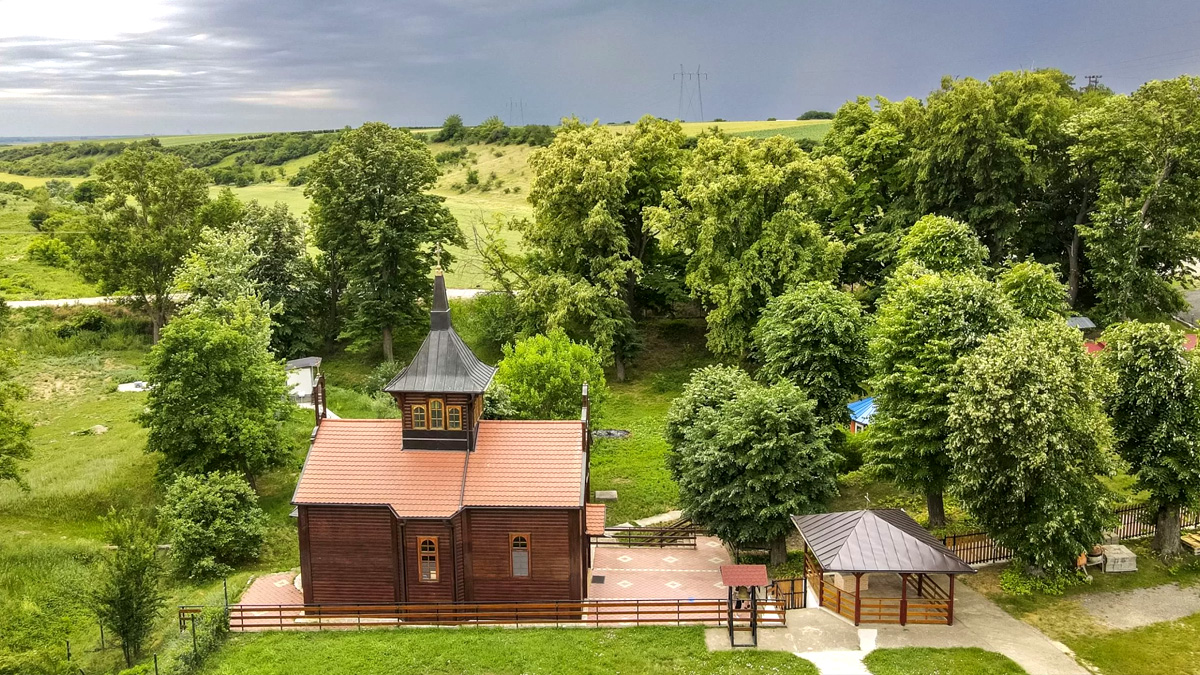
Monastery Šišatovac is located in the village of the same name, on the southern slopes of the western part of Fruška Gora. Nearby, there is a source of clean drinking water on the stream Remeta, which is named after the little church that the monks from the Žiča monastery found there while fleeing from the Turks in 1520. The establishment of this monastery is certainly tied to that event, as the monks demolished the small church dedicated to St. Nicholas and built a new one dedicated to the Birth of the Virgin Mary. Since then, it has been destroyed and rebuilt multiple times, finally achieving its current appearance in the second half of the 18th century. What first attracts attention to this building is its size, which is further highlighted next to the surrounding village houses. The monastery complex consists of a one-story guesthouse, the monastery church, and a chapel next to the cemetery located on a small hill. The monastery courtyard, covered with lawns and a living hedge in the shape of a labyrinth, dotted with various types of trees, flowers, and shrubs, will charm every visitor with its harmony and tidiness. During World War II, the monastery suffered greatly. The monastery library and archives were destroyed, and valuables were looted. If you find yourself in Šišatovac, do not miss the opportunity to visit the Petkovica monastery, which is located less than two kilometers away.
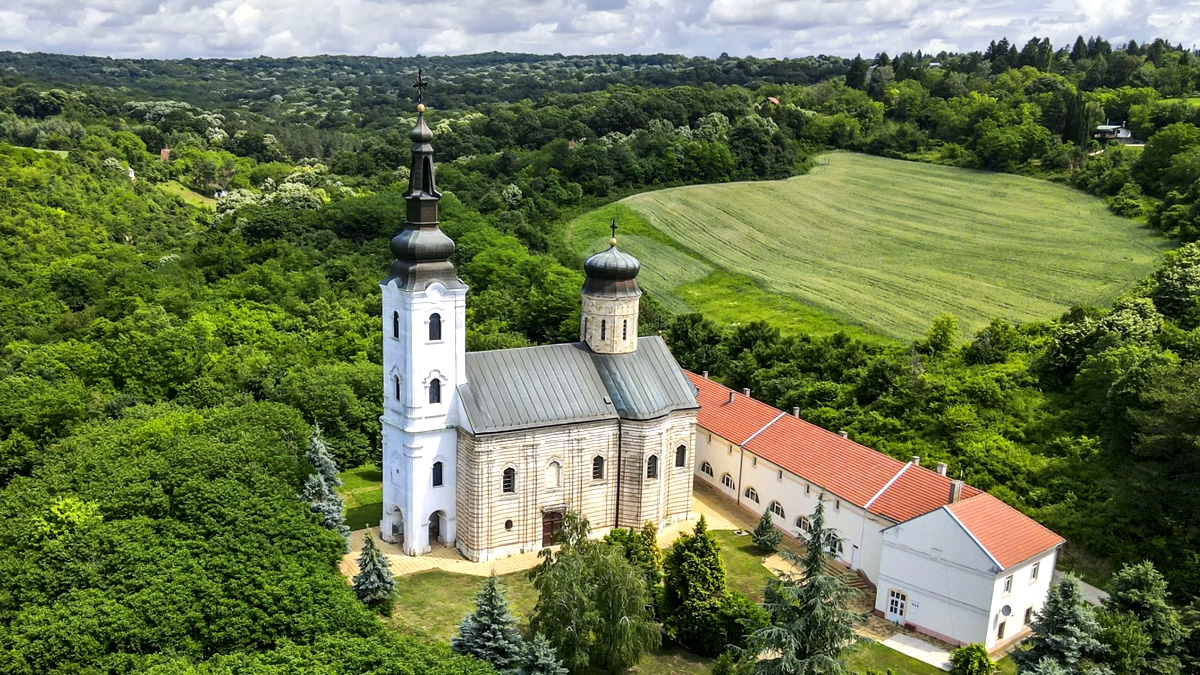
Monastery Đipša is a women's monastery – popularly known as the Divša monastery. It is located on the southern slopes of the western part of Fruška Gora, in a beautiful valley covered with dense forest. According to some traditions, this monastery was founded by despot Jovan Branković at the end of the 15th century, with a monastery church dedicated to St. Nicholas. Due to its geographical location and great distance from populated places, it has always been a poor monastery, which is why it never attracted the attention of the Turks. In the early 18th century, it fell under the administration of the Kuveždin monastery, which is five kilometers away, and for years afterward, it tried to regain the independence it only achieved in 1923. According to some claims, these two monasteries could have fallen under the administration of Hilandar, but local peasants did not allow it. Throughout its turbulent history, this monastery, like others, has been destroyed and plundered many times, including at the end of World War II when the monastery was mined. During that time, the church's vault was partially destroyed and the bell tower severely damaged. Today, the monastery consists of the Church of St. Nicholas and a two-story guesthouse.
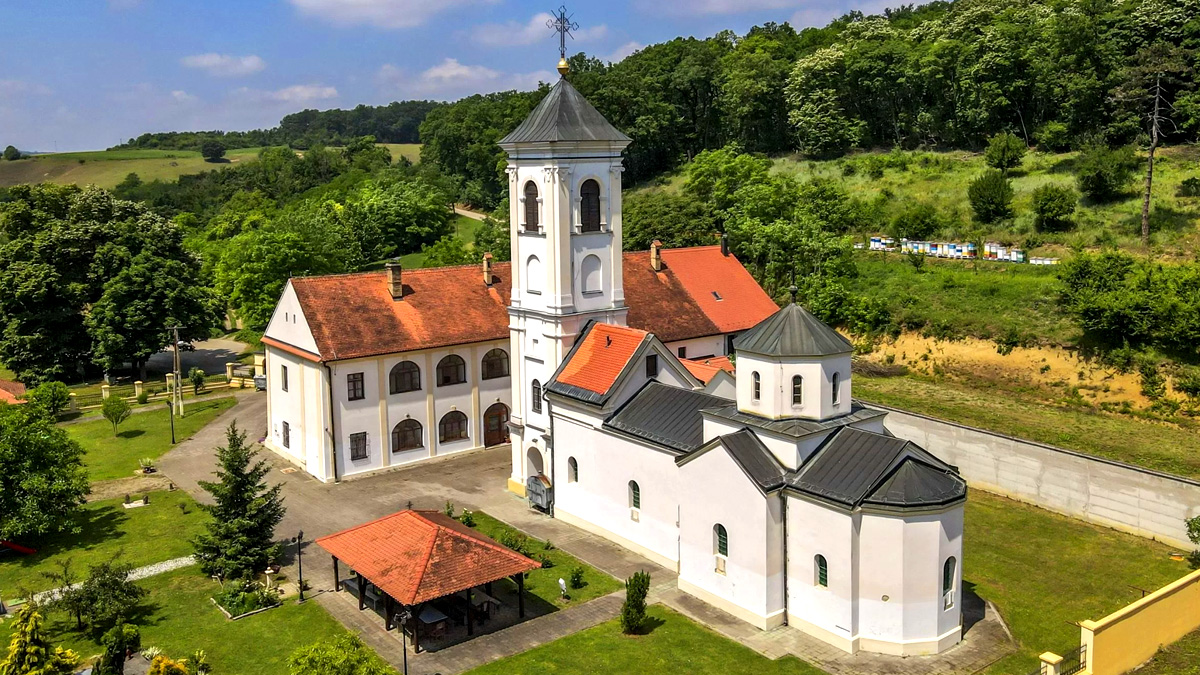
Monastery Beočin is a women's monastery dedicated to the Ascension of Christ and is located near the village of Beočin, on the northern side of Fruška Gora, between two hills covered with dense forest. The exact time of its founding is not precisely determined, but it is mentioned in some records dating back to the 16th century. The monastery houses the relics of Bishop Varnava Nastić, the youngest Serbian enlightener. This monastery is adorned by the Ljuti stream and a park that the French planted 150 years ago. At that time, a group of gardeners was working on the Versailles park and created a small copy of it with a fountain and a pond in the middle. During World War II, the monastery was devastated, but the buildings remained intact, unlike other Fruška Gora monasteries. If you continue along the road by the monastery, you will come to a crossroads leading to the Dumbovački waterfalls and the nursery of the Fruška Gora National Park, and nearby is also the Brankovac picnic area accessible by a forest path.
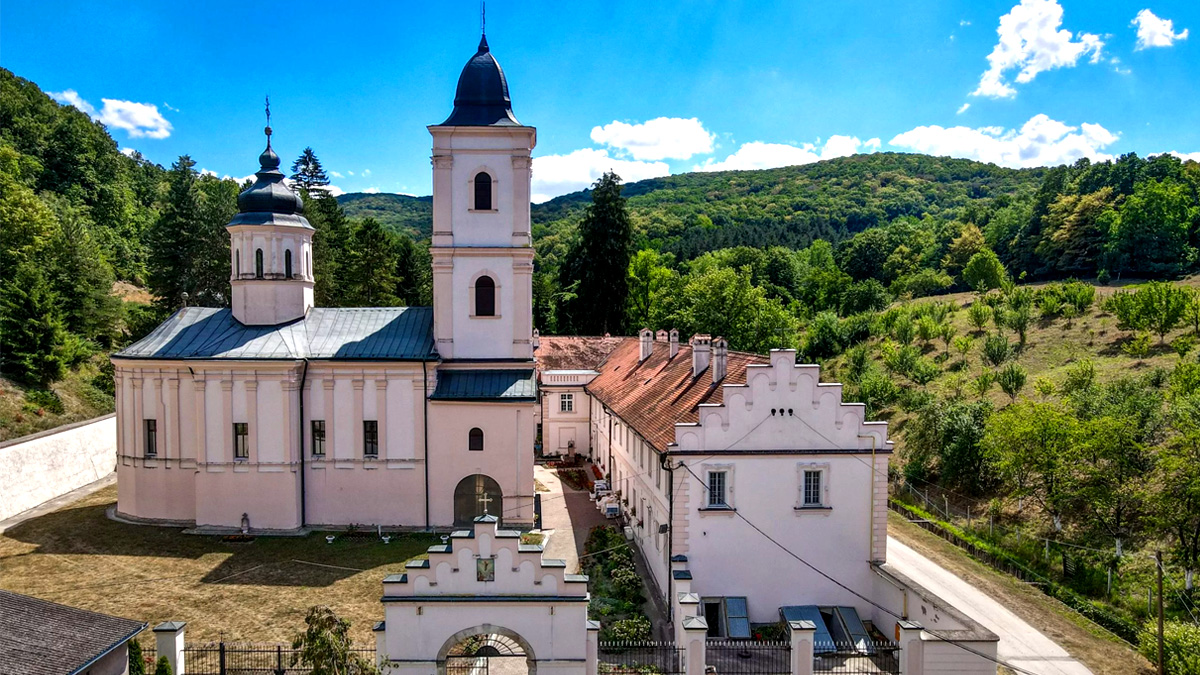
About two kilometers from the Novo Hopovo monastery, isolated and surrounded by pine forest, lies the male monastery Staro Hopovo, surely one of the smallest in Fruška Gora. It is often referred to as the Old Monastery. At the end of the 15th and the beginning of the 16th century, despot Đorđe Branković built the monastery and constructed a church dedicated to St. Nicholas. Almost nothing remains of that old church, which was made of wood and covered with tiles. After it suffered from an earthquake in the mid-18th century, today’s church dedicated to St. Panteleimon rose in its place. During World War II, the monastery church was partially damaged, the guesthouse was destroyed, and the iconostasis partially burned. If you continue along the path next to the monastery, you will reach the Jelenac stream, the source of Staro Hopovo, over which a small chapel and the Sumporni source have been built. To the east of it are the monasteries Grgeteg and Mala Remeta.

This women's monastery is located at the foot of the northern part of Fruška Gora, right by the Rakovački stream, and immediately next to the main road that runs through Rakovac. It is dedicated to St. Cosmas and Damian, and according to tradition, it was built by a certain Raka, the chamberlain of despot Jovan Branković, at the end of the 15th century, at the site where he killed a deer. The renovated massive guesthouses that surround the monastery seem to hide this small, charming monastery from passersby. As the monastery has been destroyed and plundered multiple times throughout its history by Turks, Austro-Hungarians, and Germans, its architecture has also changed. The Second World War did not spare this monastery either, as it suffered significant damage. Before the war, a tall baroque bell tower and dome rose behind the guesthouses. The church and guesthouses were severely damaged, and the bell tower was destroyed when the Germans learned that a partisan printing house was located in the monastery. Now, the dome has been renovated and resembles the Romanesque style of construction, while the bell tower is not close to its former glory. If you plan to visit the monastery, take some time to explore other locations in Rakovac.
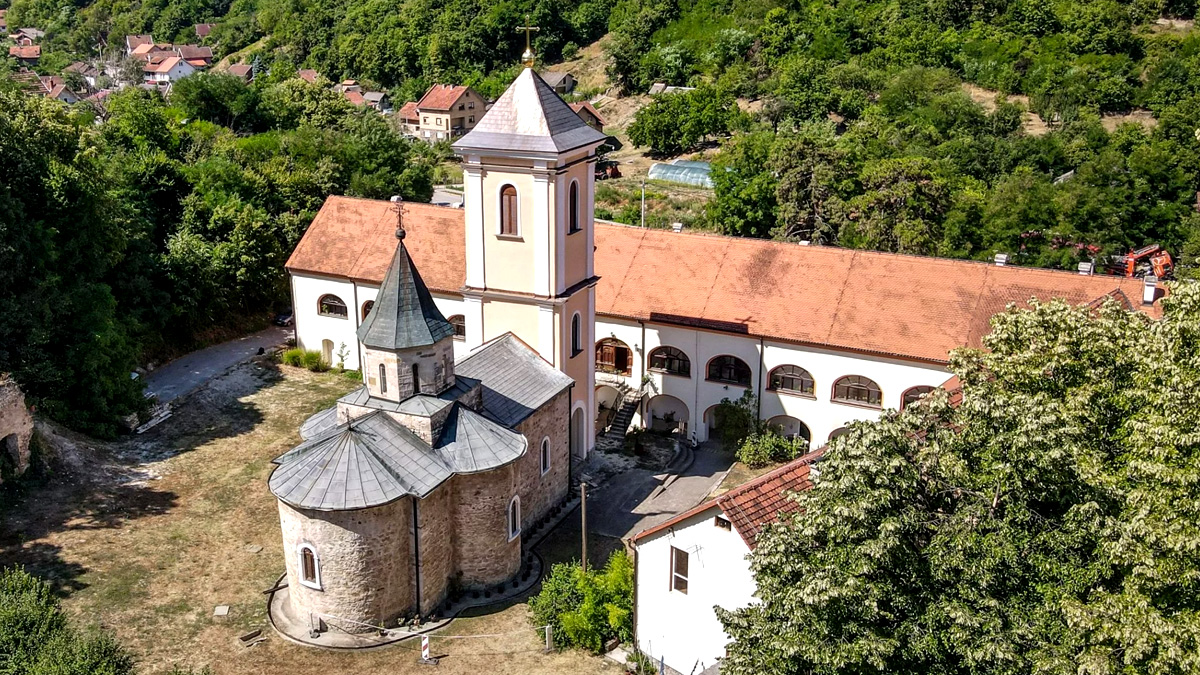
The monastery in Berkasovo, a village in the Šid municipality, is dedicated to St. Petka Trnovska, and is the westernmost Fruška Gora monastery. The Church of St. Petka was proclaimed a monastery on August 8, 2008, the day of its church feast. The monastery is female. The current Church of St. Petka was built in the second half of the 19th century. Within the monastery, there is a "healing" spring, next to which a wooden church, known as vodica, was once built. According to a written source from 1863, people from various regions gathered around the log cabin, which later burned down. An engraved inscription on a marble slab, which comes from a certain man from Dubrovnik who was healed of a serious illness, is one of several inscriptions of gratitude that testify to the healing properties of this water. The fortified town of Berkasovo was owned by Vuk Grgurević, and later by despot Jovan Branković, one of the benefactors of the nearby Privina Glava.
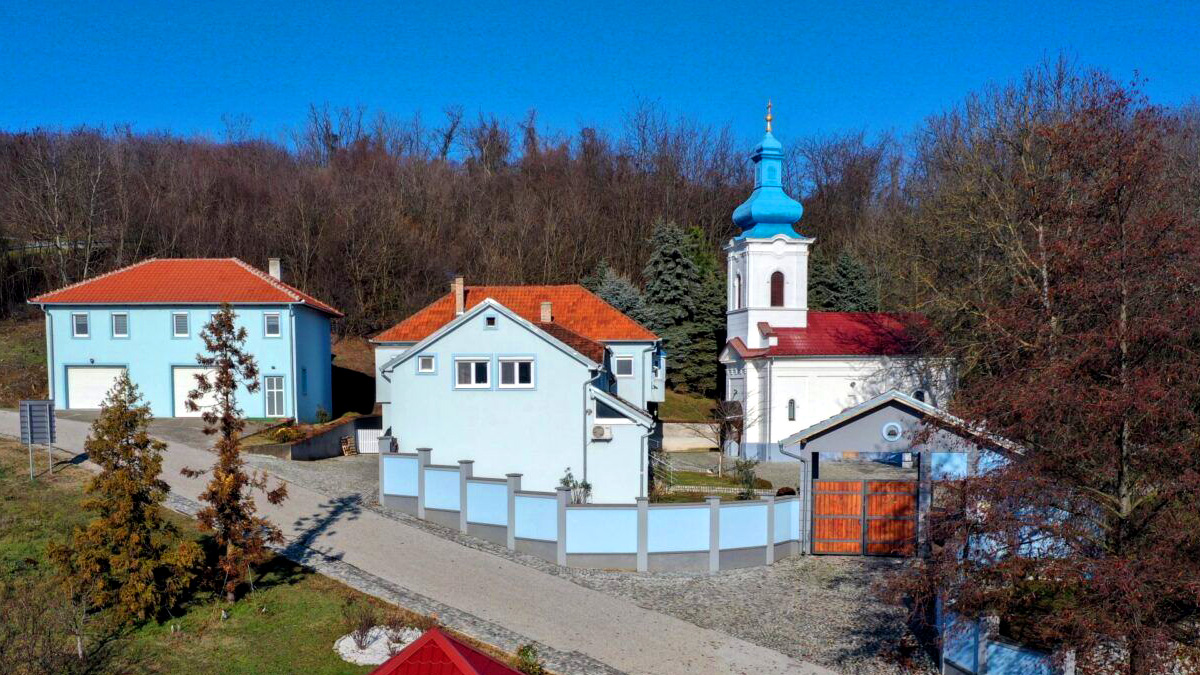
The Bešenovo Monastery is located in the village of the same name, near the main road connecting the towns of Šabac and Sremska Mitrovica. It is a women's monastery dedicated to the Holy Archangels. According to historical records, this monastery was built in the second half of the 17th century. There is also a small chapel of St. Nicholas, built at the same time. Monastery Bešenovo is known for its rich library and collection of valuable manuscripts. The monks of this monastery were also known as benefactors of the surrounding settlements, and during the Second World War, the monastery suffered significant damage. Today, it is a center of spirituality and culture. A beautiful forest park surrounds the monastery, creating a peaceful atmosphere for visitors.
